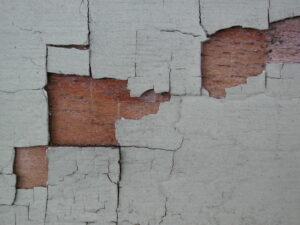Lead poisoning remains a concern in Maine, New Hampshire and Vermont, where we have some of the country’s oldest housing. Lead paint was widely used in houses built before 1950 and continued to be used in some houses until 1978.
When lead paint ages, it begins to peel and crack, turning into lead chips and lead dust. These can be swallowed by young children who are exploring their environment.
A child with lead poisoning may not show obvious signs of it, but there can be serious effects, including problems with learning, attention and behavior that can affect them throughout their lives.
Maine, New Hampshire and Vermont all now require that children be tested for lead at 12 and 24 months old. Contact your doctor to find out how to set up testing.
In addition, if your home was built before 1978, have it tested for lead. Visit your state’s lead program page for information on how:
Adults may also be at risk of lead poisoning, especially if they remove old lead paint without taking appropriate precautions. Visit your state’s lead program page above for information on safe remediation of lead paint.
If someone has swallowed or inhaled lead, call the poison center at 1-800-222-1222, text us by sending the word POISON to 85511 or chat online. We’re available 24/7 to help in poison emergencies or to answer other questions you have about lead poisoning.
You can also visit the lead page in our A-Z Poison Index for more details about lead and lead poisoning.

Chipping paint photo by Bart Everson. Creative Commons 2.0.
|
Hunting and fishing safety With hunting season upon us, remember to keep all hunting and fishing products out of the reach of children at all times, even if you are just leaving the room momentarily. Every year the NNEPC manages cases of children swallowing lead sinkers, lead pellets or other lead ammunition, which can result in lead poisoning. Products that do not contain lead can also cause problems if swallowed. They may get stuck in the child’s food pipe or intestines and require medical help to remove. |




